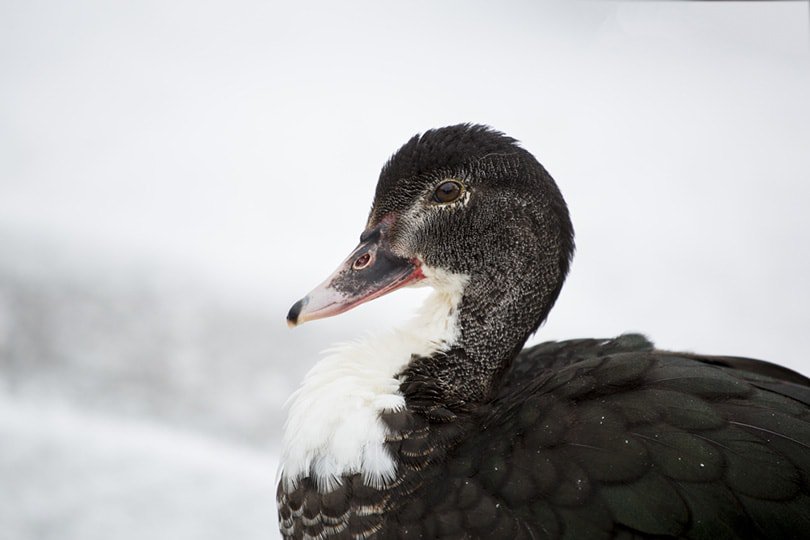Ducks are popular birds for production, such as egg or meat, but also as pets, and as show birds. With crossbreeding between native North American ducks, European ducks, and Asian ducks, numerous domestic breeds come in unique color varieties. Gray is a desirable color that’s present in several domestic breeds and creates a striking appearance against white, Mallard, or other colorations.
Check out the four gray duck breeds to learn more about these beautiful ducks.
The 4 Gray Duck Breeds
1. Indian Runner Duck
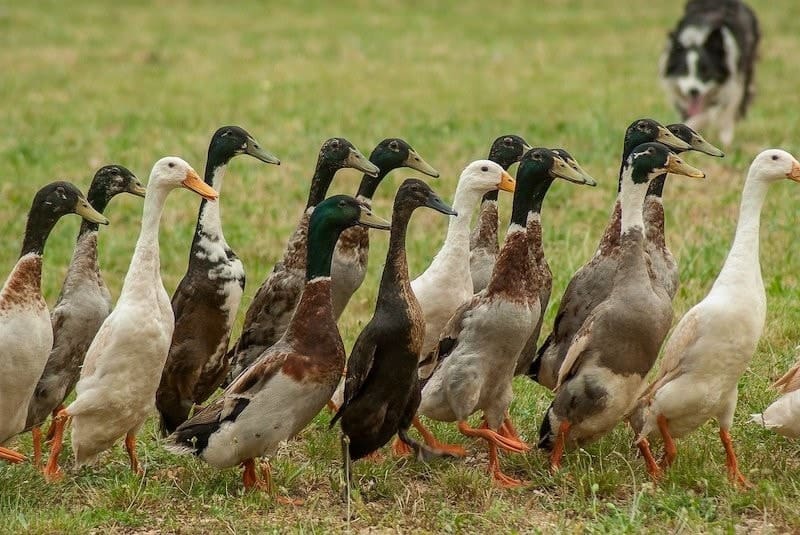
Native to Southeast Asia, the Indian runner duck is a domestic breed that’s found all over the world. This duck may be used as a general-purpose or production duck, and the hen can lay up to 180 eggs in one year.
Indian runner ducks and Pekin ducks share some unusual color mutations, such as a light phase, harlequin phase, blue and brown dilutions, and pied. Many of the varieties are a result of domestic breeding with Asian ducks. Originally, the duck was bred with the intent of creating a blue (gray) variety, though black, chocolate, Cumberland blue, blue trout, apricot trout, and Mallard varieties were also developed.
2. Swedish Duck
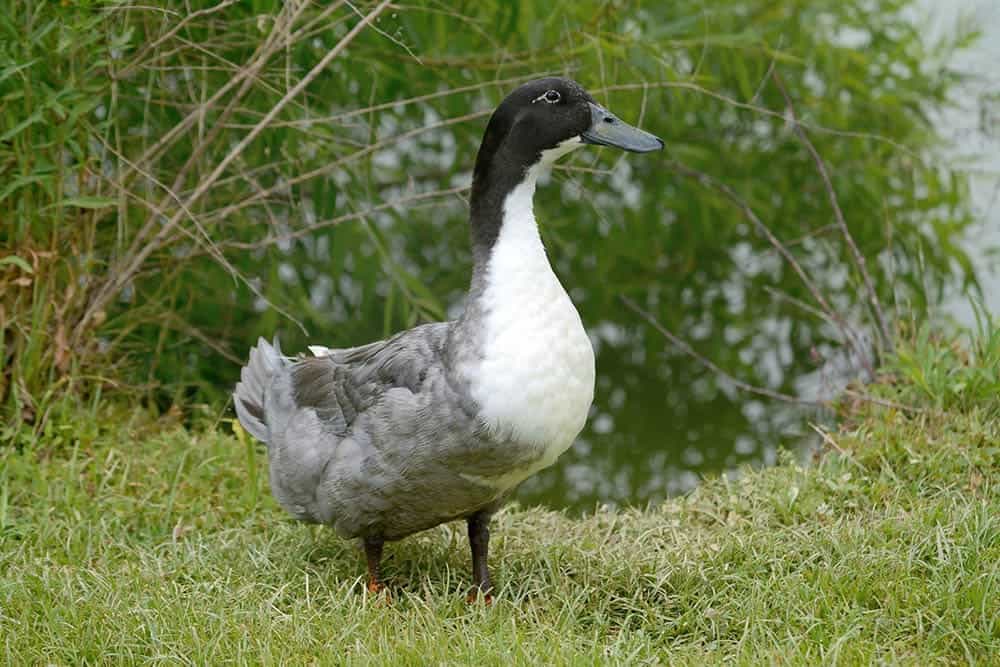
The Swedish duck is a popular European breed that followed the tradition of breeding hardy, blue-colored ducks that are difficult for predators to see. Blue Swedish ducks were first seen in Pomerania in the 19th century, but now encompass much of Europe and North America. They’re suitable as general-purpose farm ducks for pets, ornamental, and show uses.
The plumage of both the drake and the hen is a bluish-gray color with a white bib. The drake differs in that it has a dark blue head and green bill, while the hen has a blue-slate head and bill. The outer wing flight feathers are white, creating a striking contrast with the darker gray color. Swedish ducks may also come in black, silver, or a “splashed” color pattern.
3. Saxony Duck
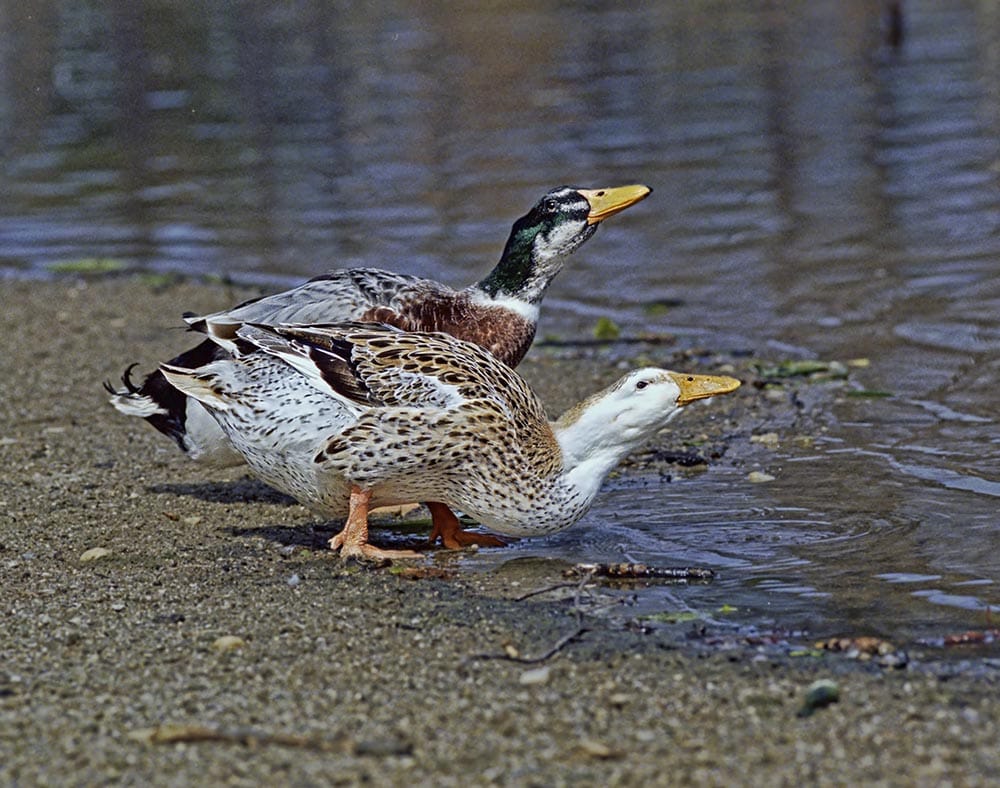
The Saxony duck was bred in Germany as a multi-purpose duck in 1930. The breed came from German Pekin, Blue Pomeranian, and Rouen ducks to create a distinct breed with striking coloration and a compact body. These ducks are foragers but may be used as an all-purpose breed for eggs and meat.
Saxony drakes display a Mallard pattern, though it’s unique to the breed. The drake’s head, back, and wings are blue-gray, while the breast feathers are a rich chestnut burgundy with a cream underbelly and white neck ring. Females are a buff color with white stripes on the face and underbelly.
4. Rouen Duck
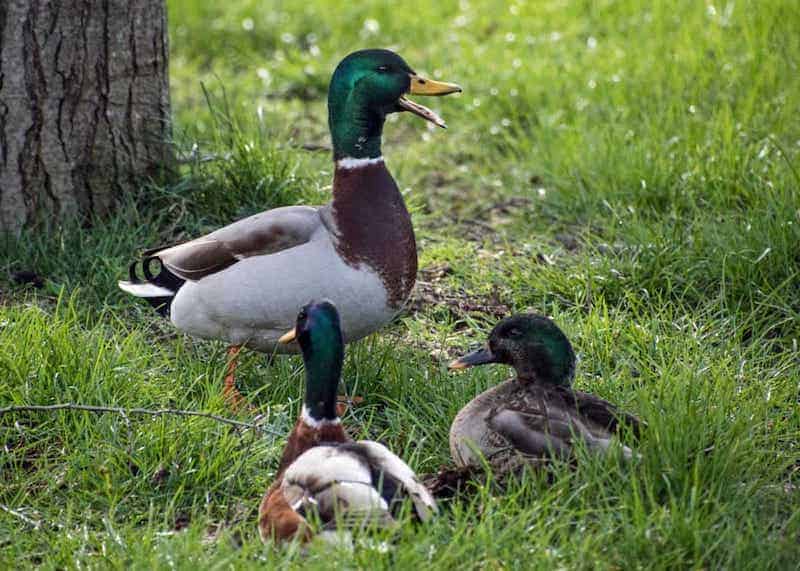
Originating in France before the 19th century, the Rouen duck is a heavyweight domesticated duck breed that’s raised for ornamental and show purposes. Some people also keep Rouen ducks as general-purpose birds, but they’re not good egg-layers and not typically raised for meat.
The duck’s plumage is its most desirable trait. Rouen ducks look similar to Mallards, especially with the green heads and white collars of the males. The drake has a gray body with ashy brown points and a deep claret breast, while the hens are a deep mahogany brown with tan stripes. Rouen hens are typically darker than Mallard hens, but the sexes of both species have blue speculum feathers.
Conclusion
Like their wild counterparts, domestic ducks can come in a wide variety of colors, including gray-scale shades like charcoal, blue, and silver. Each duck on this list has a stunning gray variation in the drake, hen, or both, along with beautiful markings that make them prized as ornamental and show ducks.
Featured Image Credit: Dlabajdesign, Shutterstock
